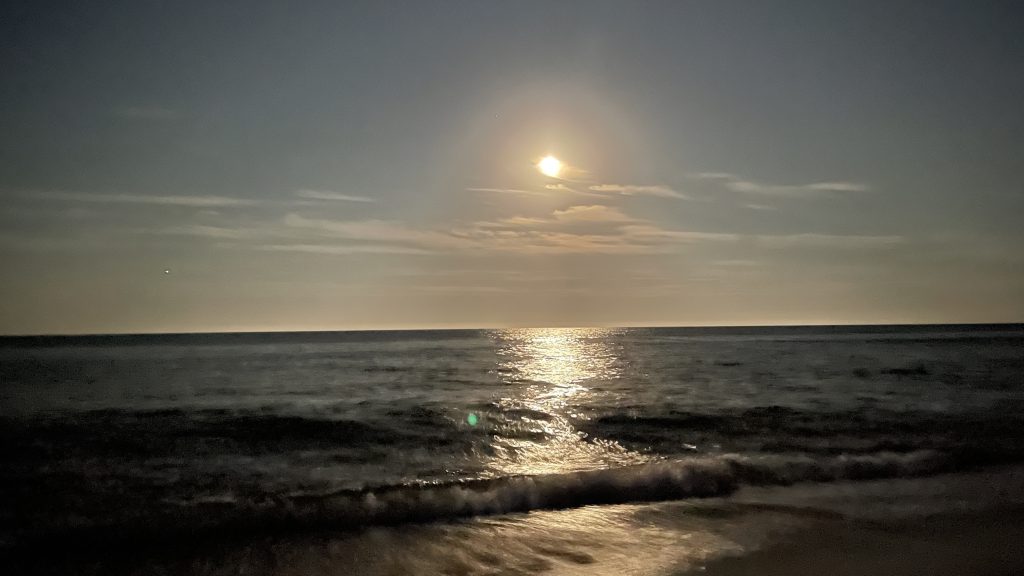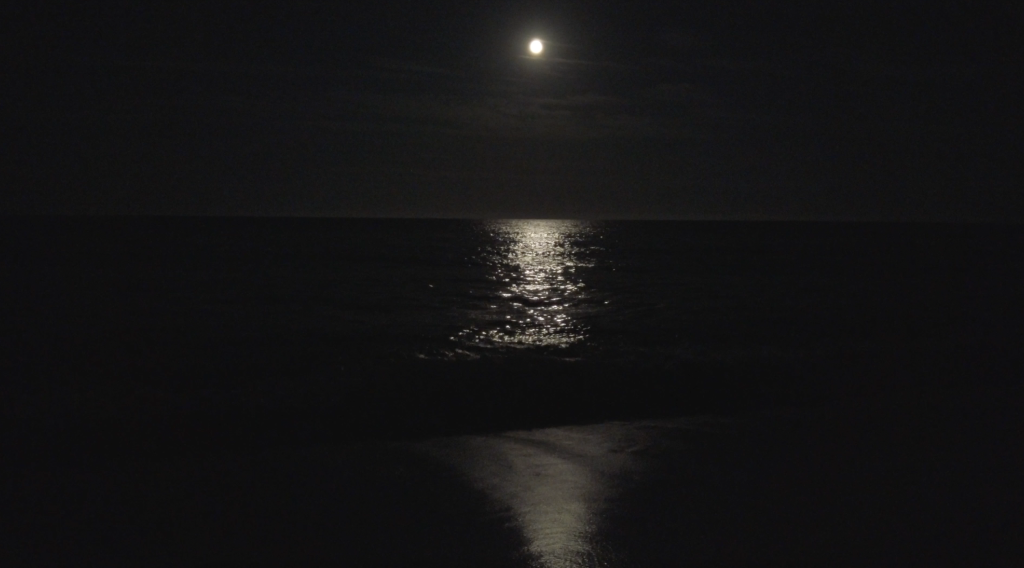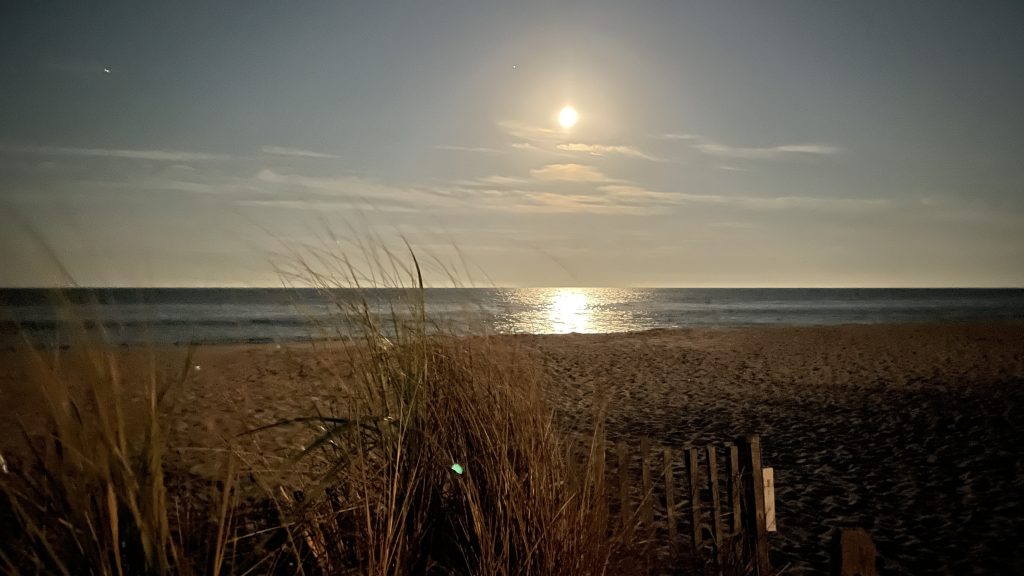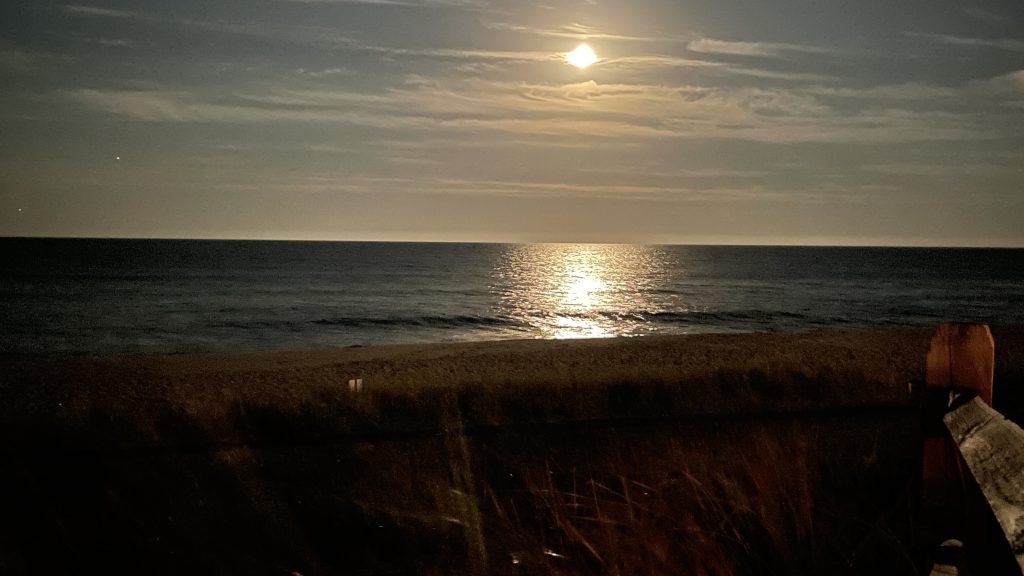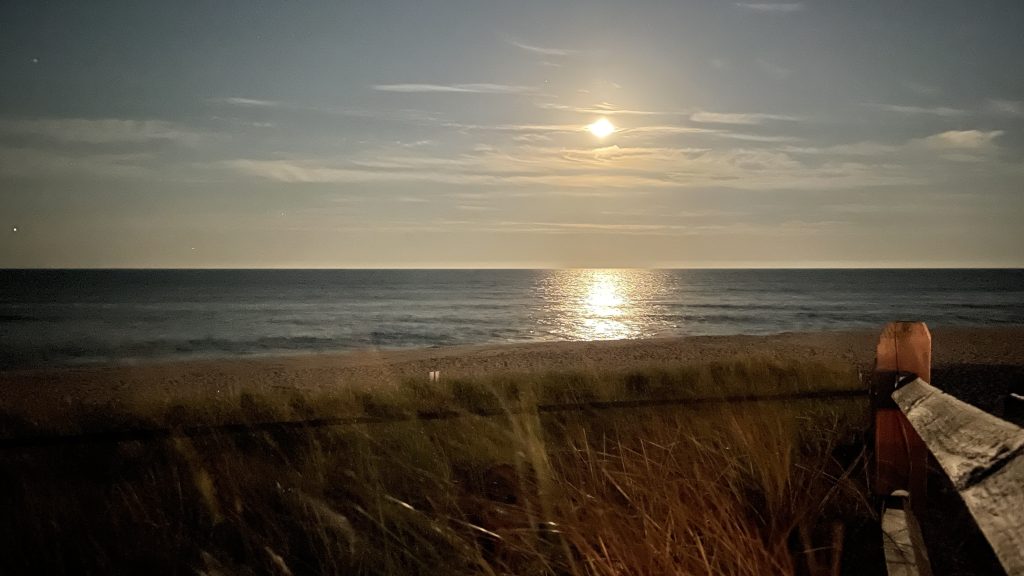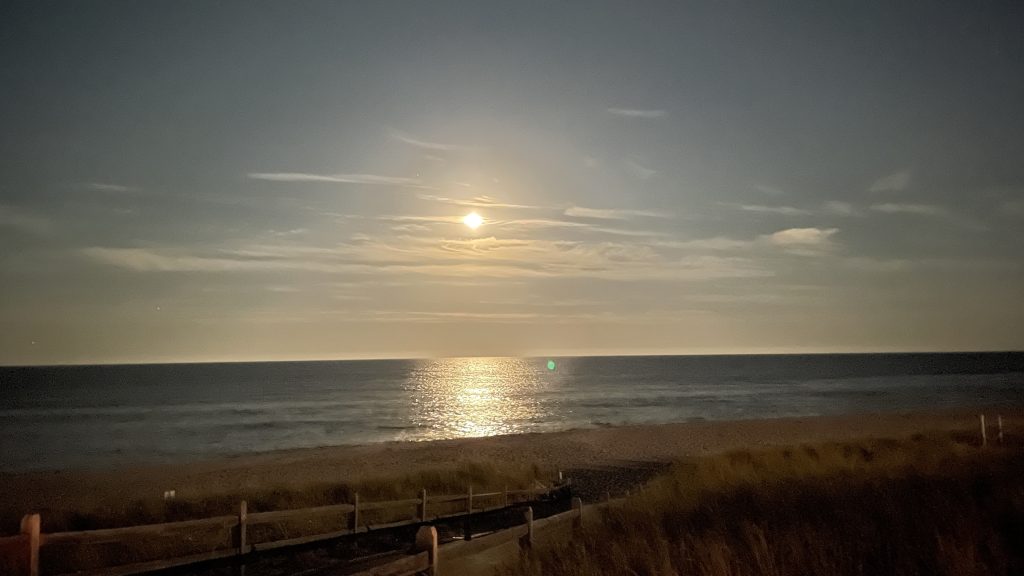The final “Supermoon” of the year peaked Thursday night over the Jersey Shore, shining an impressive bright light onto the water and sending a warm glow into the even the most tucked-away crevices.
Various angles and perspectives of the Supermoon are shown in the video embedded above; and some light-enhanced photos appear below. Thursday night’s display peaked at 9:36 p.m. and was known as the “Sturgeon Moon,” a name it gained from the Algonquin tribe since its appearance often coincided with the best sturgeon fishing of the year. A supermoon occurs when the moon’s orbit is closest (perigee) to Earth at the same time the moon is full.
Though the peak occurred Thursday night, the last several nights have been building up to the display, and the moon will continue to shine particularly bright for the next few nights. As an addition, Friday night marks the peak of the annual Perseid meteor shower, which will be most visible in the local area at 11 p.m.
The Perseid shower is often an impressive display of meteors shooting across the night sky, especially over the ocean, however this year’s viewing could be a challenge since the full moon (which was responsible for Thursday’s “Supermoon”) may generate enough light reflection to block many of the meteors.
“Sadly, this year’s Perseids peak will see the worst possible circumstances for spotters,” said NASA astronomer Bill Cooke, who leads the Meteoroid Environment Office at NASA’s Marshall Space Flight Center in Huntsville, Alabama. “Most of us in North America would normally see 50 or 60 meteors per hour,” he said, “but this year, during the normal peak, the full moon will reduce that to 10-20 per hour at best.”
According to NASA, as the full moon subsides, the Perseids will begin to wane Aug. 21-22 and cease completely by Sept. 1. The meteors are the debris remnants of Comet Swift-Tuttle, a lumbering “snowball” composed of ice, rock, and dust, which orbits the Sun every 133 years. The comet itself was last visible in 1992 and won’t pass close by Earth again until 2125.

Advertisement

Police, Fire & Courts
South Toms River Man Charged in Violent Murder of Wife

Police, Fire & Courts
Toms River Man, 36, Charged With Failing to Register Under Megan’s Law

